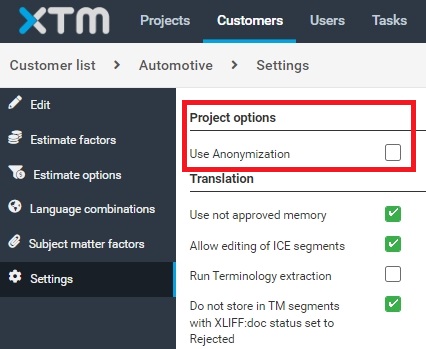Anonymization
To comply with the GDPR, companies are required to anonymize clients' TM content, essentially remove personal data.
One of the features ensuring data protection is anonymization (with a variation of pseudonymization).
In XTM, the anonymization feature is based on Named Entity Recognition (NER). Its purpose is to protect private or personally identifiable data. It identifies confidential data by converting it to inline tags, while still maintaining the integrity of the data itself.
As a result, there is no risk of a data leak, whether the text is translated by a human translator or through machine translation. Anonymization applies only to the following languages: Danish, Dutch, English, French, German, Italian, Portuguese, Spanish, Swedish.
Once the translation process is complete, and the target document is finalized, the sensitive data is automatically reinserted into the text.

If you want to use it for any other languages, you need to use special styles in MS Word to be able to convert sensitive data into inline tags during translation in XTM Workbench.